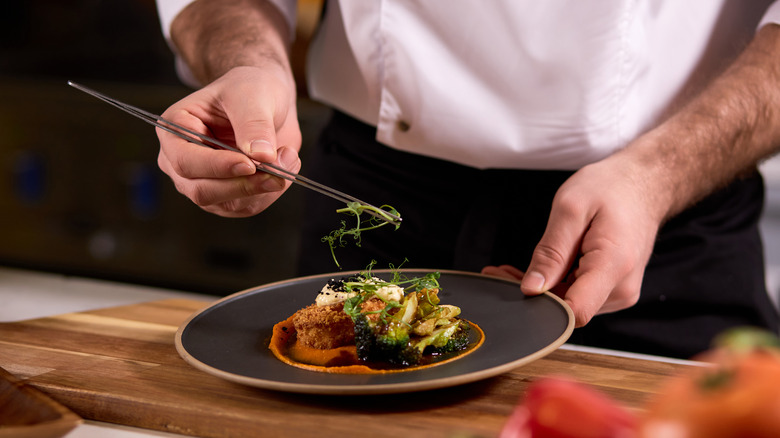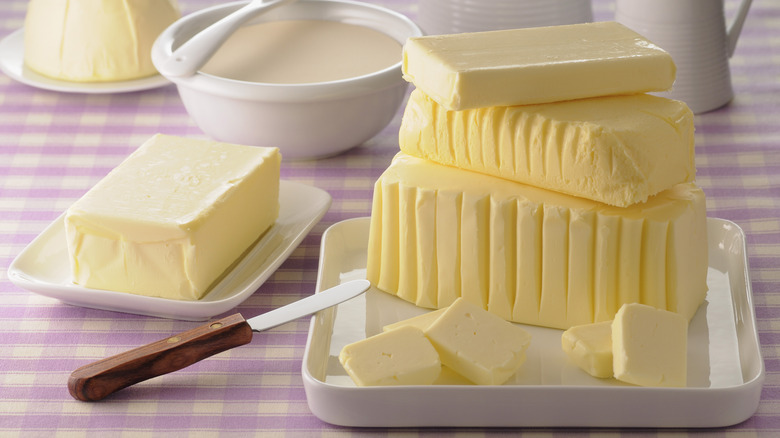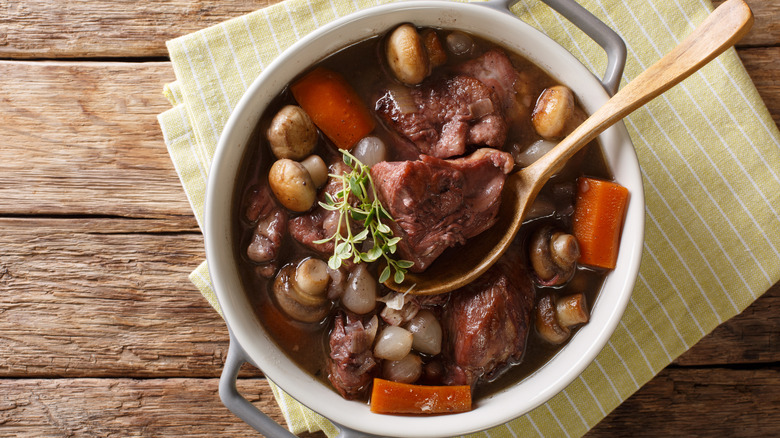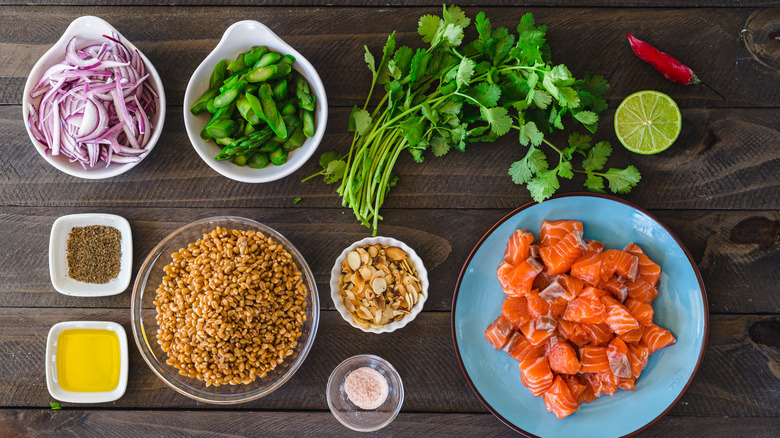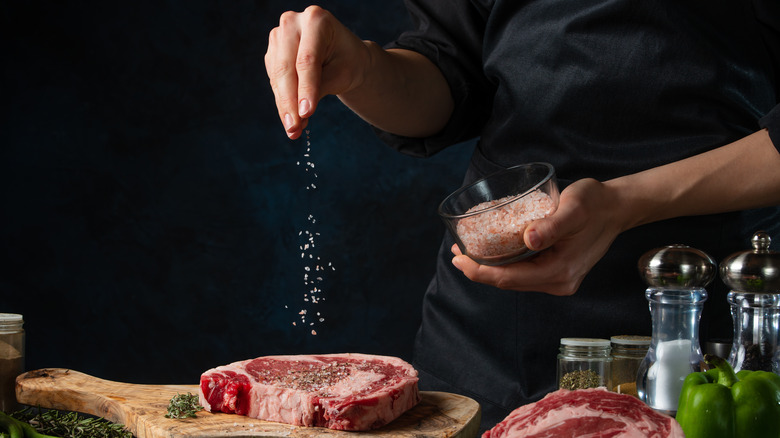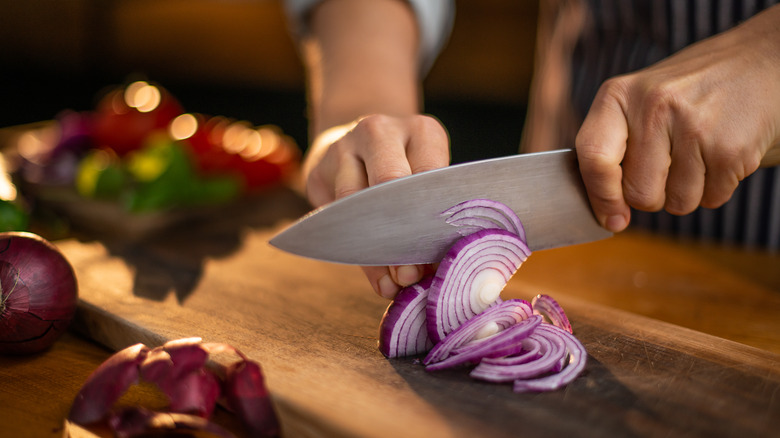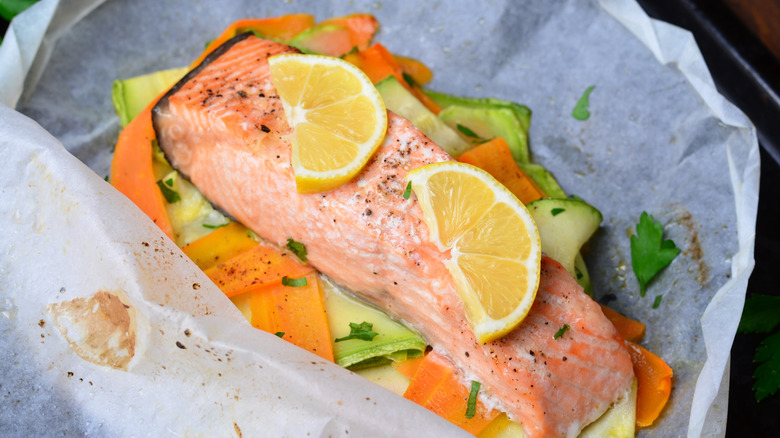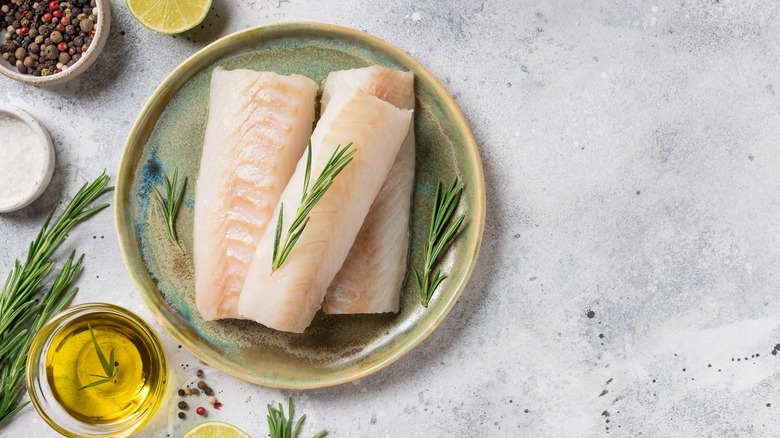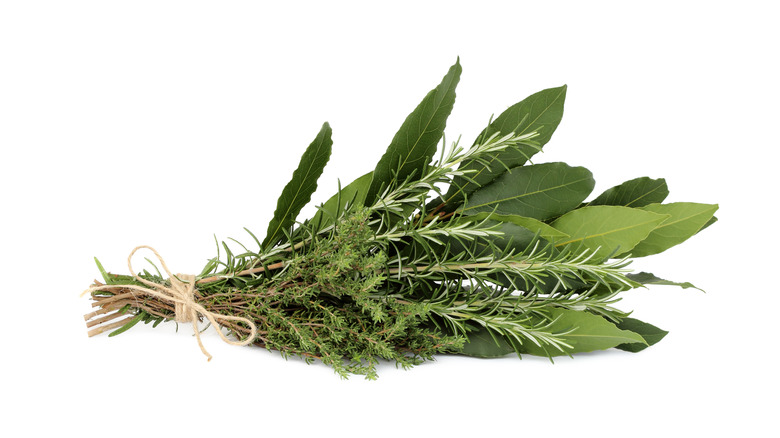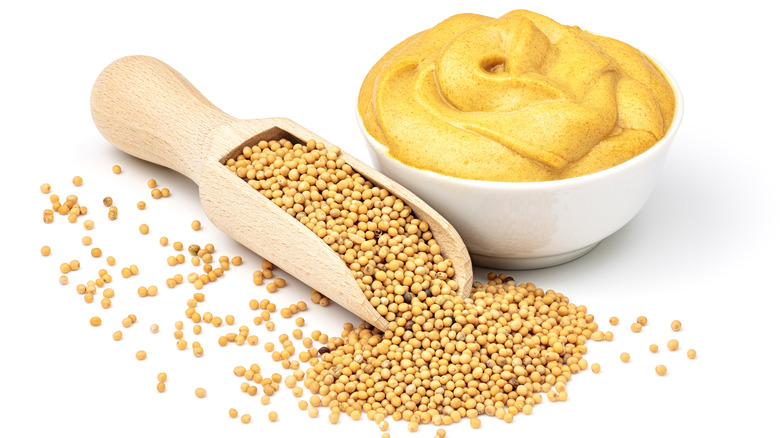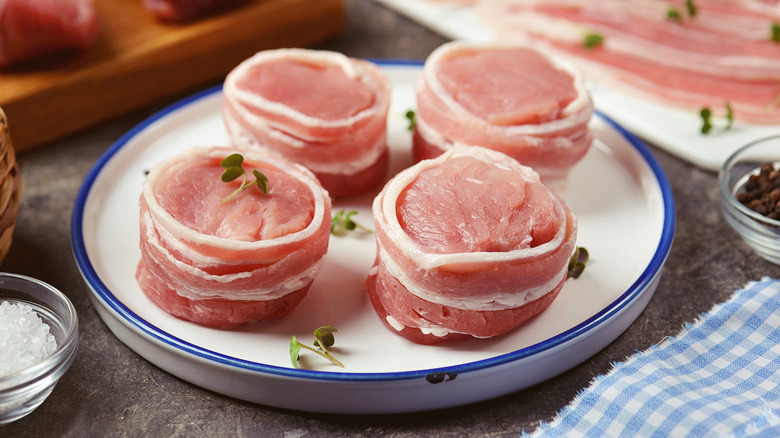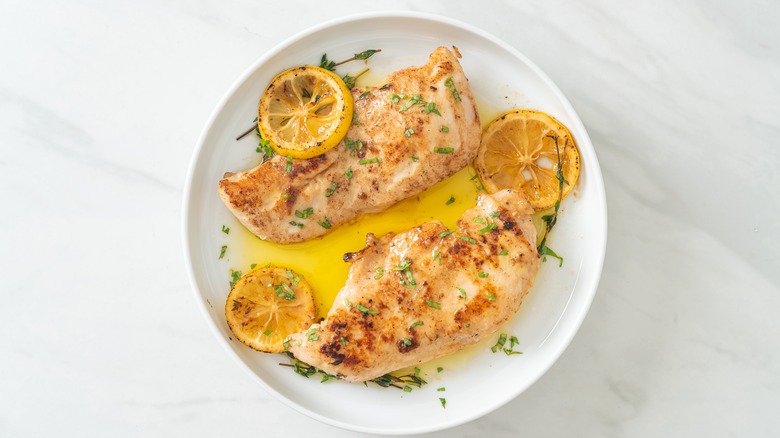The 11 Best French Cooking Tips You Never Knew You Needed
The French are often labeled as having one of the leading cuisines around the globe, setting the standard for everyone else to follow. They have taught the world that excellent dishes rely on simplicity but always require the finest ingredients and basic culinary skills. The cuisine has become synonymous with outstanding quality and an incredible balance of flavors and textures.
How did this gastronomy become the benchmark for everyone else? According to Escoffier, it all started in the Middle Ages when the rich started feasting on fine delicacies and used salt and imported spices to signify abundance. The cuisine later transformed, attaining its modern form in the 1800s when quality well-executed dishes became the main guidelines.
With such a long culinary tradition led by excellence, it's not surprising that French cuisine abounds in neat culinary tricks that make your dishes taste better and improve your cooking skills. This round-up includes some less familiar practices that most cooking enthusiasts will find practical and easy to implement.
1. Always use good butter
French cuisine is centered around butter. Although many cultures nowadays frown upon the mere mention of this fat-laden staple, the French still praise and promote it as the best and most flavor-packed cooking fat. Unlike olive oil or other types of vegetable oils, butter is incredibly versatile. Besides its classic use in baked goods — just think of the iconic layers of a croissant — butter is also used as a glaze, to emulsify sauces, or as a bread spread typically topped with jam (via Taste France). Apart from its textural component, butter also adds flavor to every dish in which it is included. As such a valuable ingredient, it must be of exceptional quality.
The French are well aware of the importance of good quality butter and have protected their regional varieties. This guarantees consistent quality is maintained and safeguards traditional butter-making practices. Three butter varieties from France currently hold the protected PDO status: Charente-Poitou, Isigny Butter, and Bresse (via Butter of France).
Hip Paris claims that French butter is superior to products from the U.S. because of its fat content and the tradition of culturing butter (leaving it to ferment longer), which results in a more complex flavor profile. If you are a bread and butter fan, using the best butter should be a prerequisite, and it will undoubtedly improve any dish you are whipping up in your kitchen.
2. Low and slow is the easiest way to get excellent results
French cooking is usually considered overly complicated, obsessively detailed, and time-consuming. However, we often forget that the French have also perfected the concept of joie de vivre — best described as enjoying life to the fullest — which is also one of the fundamental elements of traditional French cuisine. It is evident in the generous use of first-class ingredients, the restaurant-loving tradition, and the omnipresent bon vivant culture that the French promote so well. Easily assembled slow-cooked specialties also fall into this category.
Many traditional French dishes are made with classic, everyday ingredients. In reality, they are easily prepared — usually by adding all elements to a pot and allowing the heat to do its magic. Think of coq au vin, a dish cooked for hours on low heat that is arguably the best representation of traditional French cuisine. Let's not forget confit as one of the classic techniques of preserving food by cooking it on low heat while it's covered in fat (via Traditional French Food).
The result of slow cooking on low heat is most likely outstanding, and even better, you get to spend all that free time chatting, sipping wine, and enjoying life. This might be the most important culinary trick that we should all adopt from French culinary tradition.
3. Always have all your ingredients ready
Cooking can be a hectic process, as there are usually several elements that need to be done simultaneously and multiple items you constantly need to watch over. If you're aiming to dish out plates at the same time, it can get crazy fast. Though there are infinite problems you may encounter during cooking, not finding the ingredient you immediately need to add can send you over the edge. Luckily, French cuisine has a solution for everything, and in this particular case, it's called mise en place.
According to Escoffier, mise en place translates to "everything in its place," meaning that you should have all the ingredients and tools ready before you even start cooking your dish. The various elements should be sliced, pre-cooked, and fully prepared, so they are good to go when you need them. All components should be neatly assembled on the workstation, preferably packed in separate containers, so that you simply have to reach for them.
This means that you can easily prevent the oil from burning while you hastily try to slice onions. You will no longer have bland, tasteless dishes because you forgot to add salt. Preparation is key; French chefs know it, and it's time the rest of the world learns the most important trick of successful cooking.
4. Use good quality salt
If you've ever tasted an under-seasoned dish, you will agree that seasoning is critical. You may be able to deal with an overcooked steak and mushy veggies, but if the dish lacks salt or sugar, it results in an unpalatable, tasteless mess. Salt, of course, adds saltines, but it is also used to balance out all other flavors. When thoroughly incorporated, it makes up the backbone of most dishes, but a light sprinkle can give anything an extra oomph. Although it is an essential kitchen staple, we often ignore the quality of the salt we use.
France has a long salt harvesting tradition, and the French are familiar with the benefits of using only high-quality salt. Fleur de sel — translated as flower of salt — is the label you want to look for if you want the finest French salt. Its delicate flavor and texture make it an ideal seasoning salt. Another high-quality version comes from Guerande, a region with a reputed harvesting tradition dating back to 868 (via Love Sea Salt).
When cooking with sea salt, Taste France recommends thinking of the dish and the preparation technique. If you plan to reduce it, keep in mind that the salt will become more concentrated. Be careful about how much you add at the beginning, and don't forget that salt is more pronounced when the dish is warm. It's much easier to add salt than to make a dish less salty.
5. Cut the veggies according to their use
Cooking requires a specific set of skills. These often include mastering cooking techniques, learning how to balance flavors and seasonings, and knowing how to use ingredients properly. Knife skills fall into this category and are one of the essential qualifications every successful chef needs to attain to properly execute most dishes. Choosing the correct knife might be important, but it is crucial to know how to cut, slice, or dice an ingredient depending on its future use. Besides the professional culinary setting, correctly cutting your vegetables comes in handy in home kitchens.
Like most aspects of the culinary world, the French are absolute masters when it comes to knife skills. As Snippets of Paris explains, the French have an extensive list of knife cuts that any home cook can employ. Of course, the choice of the cut will depend on the cooking technique — you want larger pieces for slow-cooked dishes and thin, small-sized cuts for anything that is quickly sauteed or shortly boiled. Additionally, skillfully and evenly cut veggies will make your dish look impressive and more presentable.
6. Use parchment paper in alternative ways
Parchment paper is an essential item in any kitchen. Typically, the non-stick, heat-resistant material is used to line baking pans. Any avid baker loves parchment paper as it can save hours of cleaning and helps you transfer baked goods more easily. While most of the world uses parchment paper for these purposes, the French have thought of a couple more ingenious ways to use it.
To make a somewhat healthier version of meat, fish, or veggie dishes, you can opt for the en papillote technique, in which all the ingredients are neatly packed inside a parchment paper pouch. When placed in the oven, the heat creates steam that cooks the components inside the packet. Since the heat doesn't have room to escape, the dish doesn't get the chance to dry out and retains all of its natural moisture and flavorful juices (via Rouxbe).
Another French culinary trick is the so-called cartouche method. Essentially, a cartouche is a makeshift lid made of parchment paper with a hole in the center that allows some steam to get out during cooking. It's superior to using a regular lid as the condensation remains consistent. As a result, some liquid is reduced, but a reasonable amount stays inside the pot (via MasterClass).
7. Learn the best technique for cooking seafood
Sauteing and braising are two of the most popular French techniques people commonly rely on in home kitchens. Even flambéing — adding alcohol to a dish and then setting the whole thing on fire so the alcohol evaporates and the flavors concentrate — is no longer a frightening and novel technique. But we are confident that nage is a novelty even to most skilled home cooks.
As Michelin Guide explains, this traditional French technique — officially named à la nage — is best described as a combination of poaching, steaming, and even sauteing. It requires a fish stock flavored with white wine and herbs. Seafood is added to the broth, but the liquid only partially covers it. The heat cooks the fish while keeping the juiciness intact. Nage is also considered a healthier alternative as it doesn't require the use of any fat.
Cooking seafood requires decent culinary skills, and since it is rather delicate, some people tend to avoid cooking it at home. Mere seconds can determine whether you end up with a perfectly cooked fish steak or a bland, chewy, dry cut of fish. Nage might be the go-to technique to allow you to get perfectly cooked seafood that retains all of its juicy flavors. As a bonus, you can drizzle the brothy sauce over the fish when you serve it.
8. Don't leave the herbs and spices inside the dish
Spices and herbs are a small but crucial cooking element. Whether used sparingly or generously, they elevate any dish and infuse additional flavors, ultimately creating more complexity. However, it's less pleasant to bite into brittle star anise or feel the grittiness of dry herbs inside your mouth. But as you may guess, French cuisine has a genius trick that allows spices and herbs to impart flavor without those unwanted textural issues.
The solution is called bouquet garni. Snippets of Paris explains that it is usually a combination of herbs, either fresh or dry, neatly wrapped in a bouquet-like package that is added to a dish and cooked with the other ingredients. You can tie the herbs or stuff them inside a pouch or a filter. Before serving, simply remove the herbal packet from the dish.
This technique usually employs various herbs — bay leaf, thyme, and parsley are common options — but you can virtually make it with any spices called for by the recipe. Bouquet garni is used in some fundamental dishes of classic French cuisine such as ratatouille, cassoulet, pot-au-feu, and coq au vin.
9. Mustard is not only a condiment
Mustard is an internationally loved condiment we usually associate with sandwiches. While not everyone will agree, there is arguably no better match for a hot dog or German-style sausage than a dollop of lightly zesty mustard. Though it is used across the globe and comes in countless versions, mustard holds an important role in traditional French cuisine that is more complex and intricate than you might think. The masterful French trick that explains this intimate relationship is seen in the practice of adding mustard to anything that comes out of the kitchen.
The country is best recognized for the emblematic Dijon, a variety of fine mustard that has a long history going all the way back to the 13th century. La Cuisine Paris lists some standard practices for how mustard is used in French cuisine. It is often added as the last step in creamy sauces, and it's one of the required ingredients for a classic salad dressing. Mustard pairs well with most types of meat, so it is often used to glaze roasts, helping the skin to crisp up and soak in those earthy spicy flavors. If you've been holding on to a tube of mustard for too long, try to use some of these French tricks and see how a simple condiment can transform dishes and improve your cooking skills.
10. Keep meat juicy by covering it in fat or bacon
When cooking meat, the most important aspect is to ensure that it is tender and juicy. French chefs have figured out how to protect it from drying out, and this neat and incredibly simple trick is officially called barding. As CKitchen explains, this traditional cooking technique calls for wrapping a piece of meat with fat. This is typically bacon or suet — two ingredients that are easy to handle and make an excellent protective layer around the protein.
This method is commonly employed with lean cuts of meat or with poultry, which is infamous for drying out during cooking. Bacon is perhaps the ideal ingredient for the method, as the smoked variety can impart additional smoky flavors to the dish. Don't confuse bard and lard; the former is a technique of wrapping up meat, while the latter implies inserting fat directly into the meat.
11. Use butter in a multitude of ways
We've already established that butter is vital to French cooking. As it is such an omnipresent ingredient, naturally, the French have thought of several alternative ways to use it in the kitchen. French cuisine is well-known for its traditional sauces, and several are entirely butter-based.
One of the classic examples is beurre blanc, an incredibly creamy butter sauce made with a combination of melted salted butter, sauteed shallots, vinegar, and white wine. Butter is skillfully whisked until it turns into a silky-smooth emulsion that is best paired with fish and seafood (via The French Cooking Academy). Another trick is beurre manié, an unusual combination of uncooked butter and flour. Cooks Info explains that this thick paste-like blend can save runny sauces.
Butter is also slowly melted to create beurre noisette — or brown butter as it is internationally known. You can easily make it by gently heating butter until it attains distinctive caramel notes. This nutty butter is used as a base for sauces and is a clever trick to add more flavor to baked products. Brown butter works especially well in cakes and cookies.
